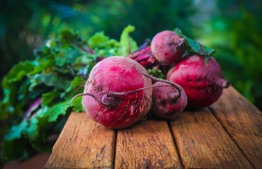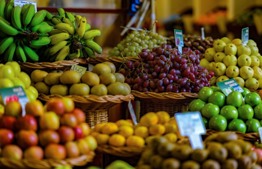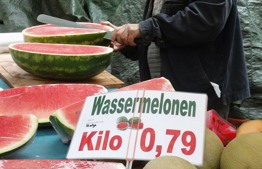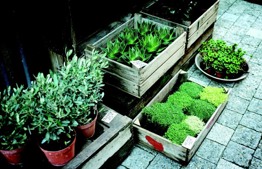Orlah, Chapter 2: Calculating Orlah Years
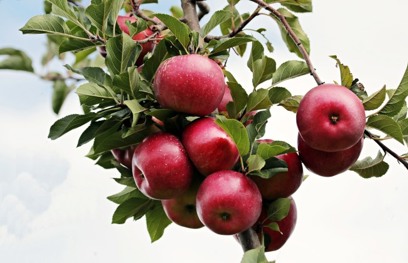
How do you go about calculating orlah years for trees? How is that different from the orlah count for fruit?
A. The orlah year count for trees
- The Mishnah states[1]: "The first of Tirshrei is the new year … for planting." From here we see that 1 Tishrei is the date that determines the beginning of the orlah count for fruit trees.
- If a fruit tree (with exposed roots) is planted at least 44 days before 1 Tishrei, the period from planting until 1 Tishrei is considered a full year with regard to orlah.[2] This period includes two weeks, which are necessary for the tree to take root in the soil (kelitah);[3] and another 30 days, which is the minimum time for a tree to be considered "planted" before 1 Tishrei so that it can be considered a year old.[4]
- For this reason, one who planted a tree by 15 Av[5] (including 15 Av), can count the year it was planted as the tree's first year and from 1 Tishrei as its second year. If one plants from 16 Av and on, the tree's first year begins only on 1 Tishrei.
- Often a fruit tree is originally planted in a clod of earth in an unperforated pot (atziz she-eino nakkuv) or in a perforated pot (atzitz nakkuv) placed on a surface that separated it from the soil. Then it is transplanted together with its original clod of dirt.For such trees, the orlah count starts all over again, but only 30 days prior to 1 Tishrei are necessary for it to be considered their first orlah In such cases, the two weeks for taking root are unnecessary, since the tree has already taken root in the soil surrounding it. What follows is that such trees can be planted until 29 Av, and the period until Rosh Hashanah (1 Tishrei) is considered its first year for the orlah count.[6] If the tree was in the ground and transplanted elsewhere together with its clod of earth, there are certain instances where the orlah count would continue from the time the tree was originally planted (the laws governing planters and saplings growing in nurseries and transplanting trees are discussed at length in Chapters 5 and 6).
- The tree's orlah count is not conditional on the tree actually bearing fruit. Even if during the tree's first three years it did not yield any fruit, during its fourth year it will no longer be considered orlah.[7]
B. The orlah year count for fruit
- Even after the tree's orlah years are over, the fruits hanging on it that grew during its orlah years are still considered [8] For such fruits to become permitted, there are two additional factors involved: (1) the date 15 Shevat (Tu BiShevat),[9] which is the new year for the fruits of the trees and (2) chanata (blooming).
- The cut-off date for the orlah count for fruit is the 15 Shevat following the end of the tree's orlah year count. The orlah prohibition no longer applies to fruits that bloom after this date. Such fruits are already considered fourth-year fruit, neta revay (see Chapter 8). In contrast, fruits that bloom before 15 Shevat (such as lemons, loquats, almonds, and peaches, among others) belong to the tree's third year, so the orlah prohibition still applies to them.[10] One year later, the fruits that bloom before 15 Shevat will be considered neta revay, while those that bloom after 15 Shevat of that year will be chullin (not sacred).
- The stage of the fruit's growth that determines the fruit's orlah year is chanata,[11] blooming; that is, the beginning of the fruit's formation. For etrogim (citrons) and lemons, the stage when the fruit reaches the size of an olive is considered [12] That is, if the fruit had reached the size of an olive (or a more advanced stage) before 15 Shevat, the orlah prohibition applies to it. Conversely, if on 15 Shevat the fruit is smaller than an olive (from a blossom until the fruit is the size of an olive), this fruit will be considered neta revay.
C. Stage of the fruit's growth when orlah applies
- The Torah states: "you shall regard its fruit as forbidden" (Vayikra 19:23). From here we see that the fruit only becomes forbidden from the stage that it can be defined as a fruit, but not at earlier stages.[13] For this reason, even though the blossom is a pre-fruit stage, it is not considered It follows that it is permissible to smell and otherwise benefit from blossoms on orlah trees.[14]
The first stage when the orlah prohibition begins for fruit is smadar or bosser.[15] These stages come a little after the fruit is first formed.[16] At this point, the fruit is still not worthy of consumption. Since the orlah prohibition also includes deriving benefit from the fruit, it is also forbidden t
[1] Mishnah, Rosh Hashanah 1:1.
[2] Rambam, Hilchot Ma'aser Sheni 9:8.
[3] Yevamot 83a; Rambam, ibid.
[4] Tosefta, Shevi'it 2:3; Yevamot, ibid.; Rambam, ibid.
[5] Rambam, ibid., 10–11; Shulchan Aruch, YD §294:4. See Rabbi Yoel Friedemann, "The cut-off date for planting trees without a clod of earth," HaTorah VeHa'aretz V (5760), pp. 78–79. See also Chazon Ish, Hilchot Shevi'it §17:29; ibid., §26:2; Zera'im, Dinei Orlah, at the end of Hilchot Orlah §2–3 and Rabbi Shlomo Zalman Aurbach, Minchat Shlomo 1:51 §5. Both disagree and rule that even one who plants a tree on 16 Av can count the period until 1 Tishrei as the tree's first orlah year, in keeping with the principle of miktzat hayom kechulo (a bit of the day can be considered as the whole day).
[6] See "The period necessary for taking root when transplanting a sapling from a pot to the earth," HaTorah VeHa'aretz (5760) V, pp.78–87. This article surveys the positions of Rabbis Yoel Freidemann, Dov Lior, and Yehoshua Neubert, who are lenient, and Rabbi Shlomo Min Hahar, who is stringent.
[7] Shulchan Aruch, YD §294:17.
[9] Shulchan Aruch, YD §294:5.
[10] Although there are lenient opinions, we are stringent in the Land of Israel. In any case the cut-off date is 15 Shevat. This is the ruling of: Chazon Ish, Dinei Orlah §5; Kerem Tziyon, Hilchot Orlah 9:8 (p. 46 and n. 9). See also Neta Hillulim 1:7–8 (p. 14) However, there are those who are lenient if three whole years passed from the time of planting; that is, if one plants between 16 Av and 15 Shevat (or more precisely: when from the time the tree takes root; see below), according to Rambam, Hilchot Ma'aser Sheni 9:11–12, and as implied by the first opinion cited by Shulchan Aruch, YD §294:5; Yalkut Yosef, Mitzvot HaTeluyot Ba'aretz II pp.129–130. The poskim disagree on Rambam's intent (ibid.): whether the "three years" he mentions are counted from the time of planting or from the time the tree takes root (kelitah)—that is, two weeks following the planting. Even according to the lenient poskim, one should be stringent and begin the orlah count from the time the tree takes root. See Neta Hillulim, ibid., n. 7.
[11] Tosafot, Rosh Hashanah 14a, incipit be'echad; also according to Rambam, Hilchot Ma'aser Sheni 1:2; ibid., Hilchot Shemita VaYovel 4:9, while the determining stage for ma'aserot and shemita is the onat hama'aserot (at the beginning of the fruit's ripening, when it can be eaten in extenuating circumstances), the stage that determines orlah vis-à-vis fruit is much earlier: smadar or bosser, which comes afterwards. See the gloss by Rabbi Avraham David Rosenthal, in: in Kerem Tziyon, Orlah Halachot Pesukot, chap. 9, n. 4; Rabbi Yaakov Ariel, "What is chanata?" Ohala Shel Torah IV, p. 39; see also Rabbi Yoel Friedemann, "The orlah count for etrog trees," HaTorah VeHa'aretz V (5760), pp. 214–215. See also the Encyclopedia of Agriculture and Halacha, entries: chanata, bosser and smadar.
[12] Rabbi Yaakov Ariel, ibid., pp. 298–300, following Tosafot, Rosh Hashanah 14b, incipit ulashevi'it. It seems that for all other fruit, we determine according to the ratio between the size of the lemon and the size of the other fruit. That is, a fruit that is smaller than a lemon or etrog, the determining stage for that fruit is when it reaches the size that is smaller than an olive. However, for fruits that are bigger than a lemon or etrog, the determining stage is when it is larger than an olive
[15] Smadar is an earlier stage than bosser. The poskim dispute whether the first stage when the orlah prohibition applies to grapes is bosser, while for other fruits it is smadar, or for all fruits the onset of the prohibition is smadar. See Responsa Radbaz, ibid.; Chazon Ish, Orlah §3:5 and Dinei Orlah §41; Neta Hillulim 6:21, n. 26 (p. 27).
[16] That is, the follow the blooming stage, chanata; for lemons—when they are slightly larger than an olive; see Section B.2 and n. 12, above.

